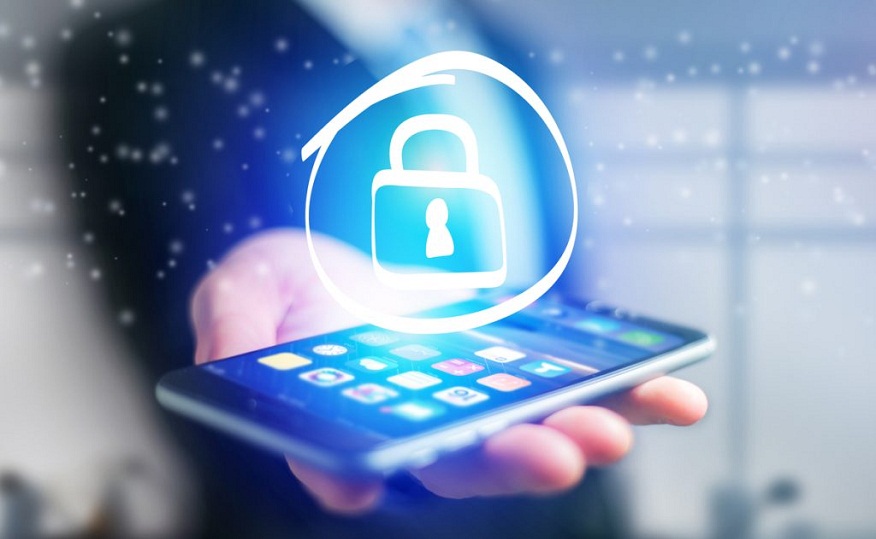Digital programs enhanced our lives, giving effortless entry to info. However, constant shielding is necessary .Mobile app security is key today, as cyber dangers lurk and hackers always improve their tactics. This piece explores mobile app safety depths, examining risks, weak points, and best ways to secure your digital realm.
Grasping Mobile App Safety
To comprehend specific safety steps, grasp the mobile Enterprise app security landscape first. It covers defending portable programs from unauthorized entry, info breaches, malware, and other cyber-attacks. This needs using various methods to reduce risks and guard sensitive data stored or sent by mobile apps.
Mobile App Safety Threats
- Malware and Infections: Malicious software, malware, poses huge risk to mobile app safety ty. Infections, trojans, and other malware forms can sneak onto devices via infected apps, compromising user info and device function.
- Data Violations: Mobile apps handle sensitive user details like personal info, finances, login credentials often. Breaches occur when unauthorized parties access this, potentially causing identity fraud, scams, and reputational damage.
- Weak logins and poor access rules let unauthorized people see private parts or data on mobile apps. This breaks privacy and lets unapproved actions happen. Apps store info on devices or send it over networks. Poor encryption or wrong storage lets others view this data, risking privacy.
- Hackers can spy on or change talks between devices and servers in man-in-the-middle attacks. Best Practices for Secure Mobile Apps Using proper coding methods when building apps lowers flaws. This needs encryption, checking inputs, and strong logins. Regular audits and code checks identify and fix weak spots.
- Encrypt sensitive data stored and sent to prevent unauthorized prying. Use robust encryption and manage keys securely. Multi-factor authentication enhances user verification, blocking unauthorized access. Require multiple proofs like passwords, biometrics, one-time codes.
Using a protected system helps keep your information safe. Utilize HTTPS (a secure protocol) to scramble data moving between the app and server.
- Teach users about risks and how to avoid them. Give instructions on enabling security features like biometrics (face/fingerprint ID) and device encryption – this adds an extra layer of security.
- The Google Play Store and Apple App Store have measures to detect and remove malicious apps. This helps keep your device secure. Keeping apps updated is crucial. New updates fix known vulnerabilities, strengthening an app’s security. So always install the latest version as soon as it’s available.
- Some apps link to third-party services or APIs. These connections can put your data at risk if not set up properly. Before integrating outside services, thoroughly assess their security practices. App sandboxing isolates each app’s data and resources. Using this technique restricts what access an app has on your device. So if one app has issues, others remain protected.
- Control apps that run using whitelisting and blacklisting. Whitelisting permits only approved, trusted apps installation and execution, cutting malware risk. Blacklisting blocks known malicious apps from running or installing on the device.
- For authentication tokens like OAuth and JWTs, generate, transmit, and store them securely. Use token expiration, revocation, and binding to mitigate token theft or misuse risk.
- Apps often cache data locally for better performance and user experience. However, cached data can be vulnerable if not properly secured. Encrypt and control access to protect sensitive local data. Implement mechanisms to securely wipe cached data when no longer needed.
- Identify potential threats and prioritize mitigation through threat modeling and risk assessment. By analyzing attack vectors and associated risks, developers can implement targeted controls against significant threats.
- Allow users to remotely wipe or lock devices if lost or stolen, protecting sensitive data. This mitigates data breach risks by preventing unauthorized access.
- Monitor your app constantly. Find security issues quickly. Watch app use, network traffic and system logs. Look for strange actions or breaches. Have a plan ready to stop security problems fast. Minimize impact on users and data.
- Many mobile platforms exist with different versions and makers. It’s hard to secure all equally well. Know each platform’s security rules and best ways. Use cross-platform tools to test compatibility and security easily across various systems.
- Strong security shouldn’t hurt user experience. Balance security and ease of use carefully. Security can’t block app functions or stop people using it. Make authentication smooth. Avoid annoying security pop-ups. Guide users clearly for better security and usability together.
- Watch out for insider threats like rogue staff or hacked accounts. Use role-based access limits and least access needed rules. Train employees on security regularly. Monitor activity and log files to spot insider misuse and unauthorized data access quickly.
- Security rules to follow involve legal compliance. Sensitive info apps (e.g., healthcare, finance) must adhere to rules like GDPR, HIPAA, PCI DSS. Key measures include data encryption, access controls, and audit trails. Work closely with legal teams to meet all required standards.
- New threats emerge frequently in mobile app security. Developers stay informed on latest risks/trends, join cybersecurity communities, share intelligence to protect against novel attack vectors. Continual adaptation of security measures is crucial.
- Privacy is pivotal today; users care deeply about personal data collection, storage, usage practices. Transparency policies, explicit consent for data processing enhances trust. Technologies like differential privacy, data anonymization/minimization mitigate risks.
- Biometric checking like fingerprints, face scans, or eye scans can be handy and safe ways to prove who you are without passwords. But biometric info is really private, so it needs special strong safety rules to stop bad guys from stealing or misusing it. Coders should safely lock biometric data away, maybe using special hardware locks or secure spaces, and follow best practices for biometric checking to keep users’ privacy and security tight.
- Reverse engineering is when bad guys try to break down an app’s code to find holes and hacks. To stop reverse engineering attacks, coders can use tricks like scrambling the code, hardening the software, or giving the app self-defense tools to run while it works. These make it way harder for attackers to unpack the code, study how it runs, or mess with it, boosting the app’s overall safety.
- Many apps rely on backend web services to store info, handle requests, and let phones chat with servers. Locking down these back-end services tight is key for the whole app’s security. Coders should make strong ways to prove who users are and limit what they can do, check all data coming in to stop code injections, and encrypt private data when stored or sent.
- Ensuring supply chain security is crucial for mobile apps. It doesn’t end with development and deployment. It includes third-party libraries, frameworks, tools, cloud services, and vendor offerings used in creation. Supply chain attacks, where attackers exploit upstream vulnerabilities, are rising. To mitigate risks, developers must vet third-party components for security flaws.
- Safeguarding mobile payment transactions is vital. Financial apps like mobile banking and e-commerce are prime cybercrime targets for stealing sensitive data. To secure transactions, developers must implement robust encryption for data protection, in transit and at rest. Adhering to standards like PCI DSS and EMVCo ensures payment processing system integrity.
Conclusion
These days, mobile tech rules our world. So, keeping apps secure is really important. It protects our personal info. This article talked about threats, weaknesses, and best ways to be safe. Visit appsealing for the best deals.

